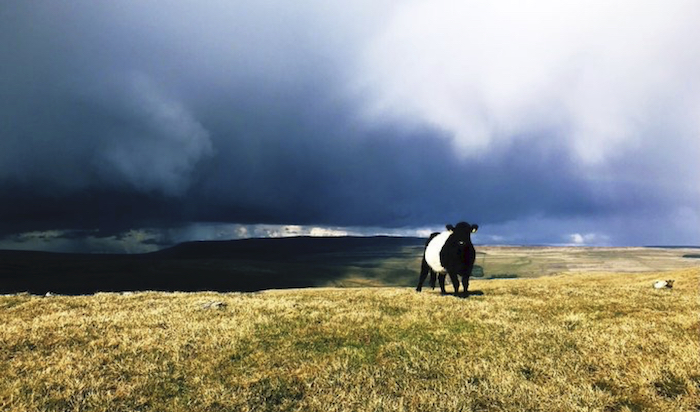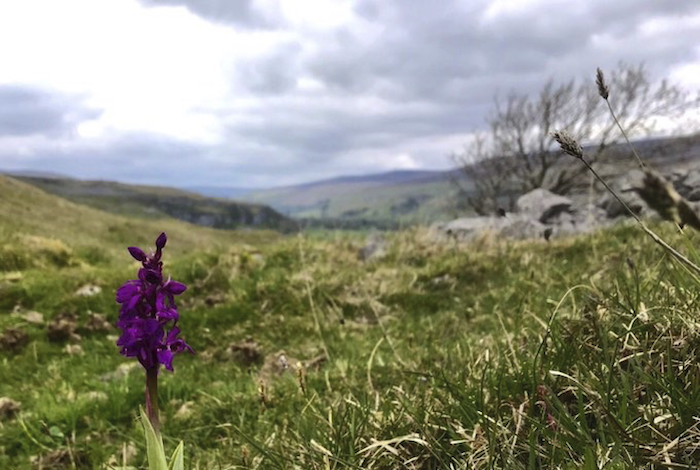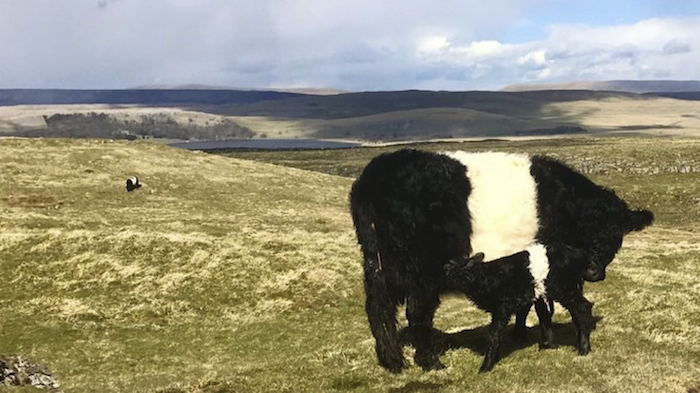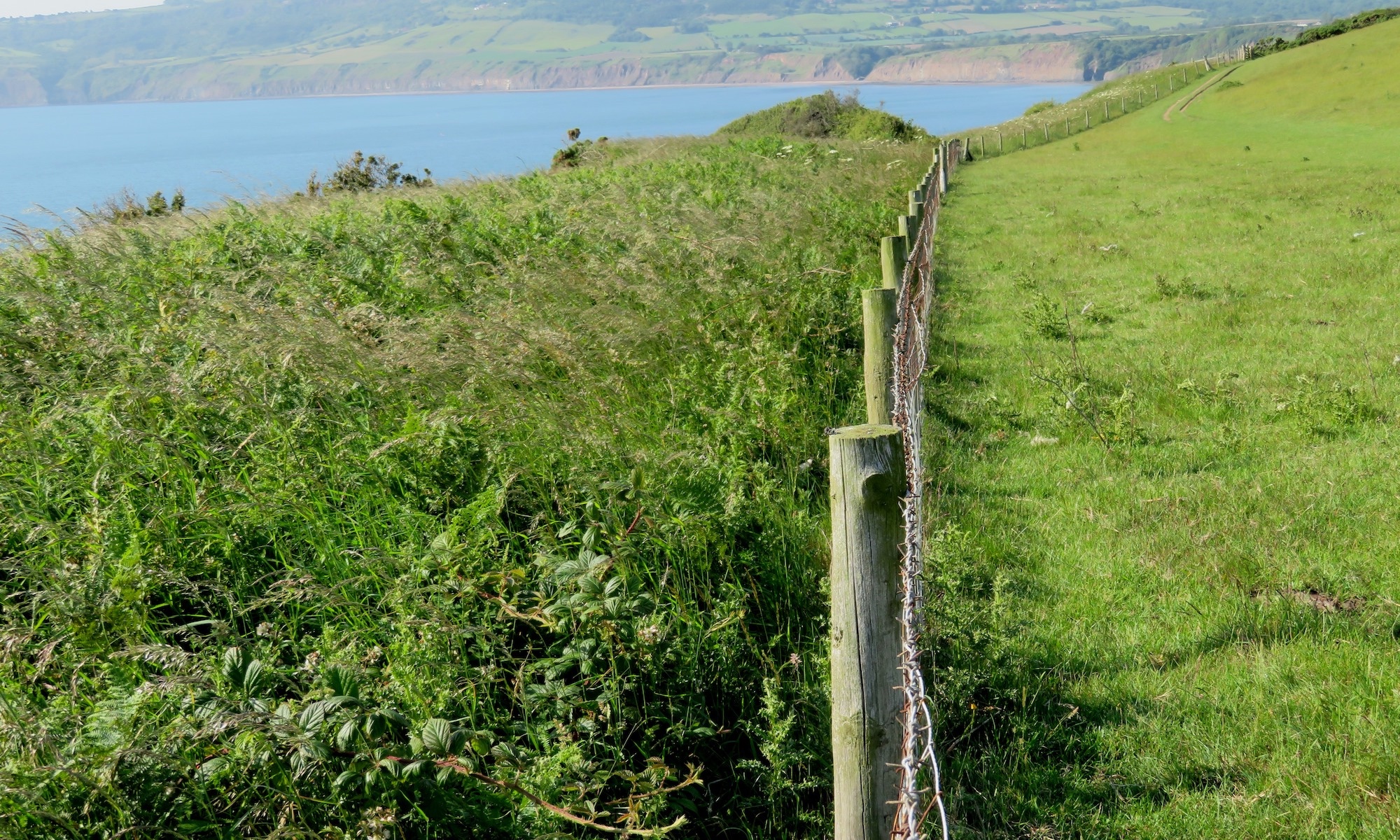by Jessica Penrose
23rd May, 2021
Neil Heseltine’s return to more traditional methods of mixed grazing in his upland farm has led to multiple benefits – higher profit margins and financial resilience, a better work/life balance and big wins for nature.
“The way we’re farming now is giving everything – whether it’s plant, animal or bird life – the opportunity to survive, and thrive and live. We’re giving them the same opportunity as we do the livestock that we own, in a system and a situation where they can all live together. And to see that gives us a huge amount of pleasure.” – Neil Heseltine.

It all started with the cattle. As a Yorkshire Dales sheep farmer, Neil’s focus had always been on producing the best lambs that he could – but in the early 2000s a Yorkshire Dales National Park scheme to reintroduce native cattle to the uplands intrigued him.
He took on 20 Belted Galloways in 2004, and soon began to notice not only a change in the biodiversity of his land as grazing pressure reduced, but also an improvement in the bank balance. Having a hardy breed of cattle that could be left out all year round saw a drop in overheads – no need for additional feed or the overwintering costs of keeping them indoors for six or seven months. As he increased the numbers up to 80 or 90 cattle a few years later, in the higher-level payment scheme, and saw profit margins increase, his thoughts turned to the fact that even in the best years his sheep business only ever broke even.
“It was the horrendous spring of 2013 that was the last straw, with snow right through the lambing period in late March,” Neil explains. “After that we thought, we’ve got to reduce numbers. If the cattle can fend for themselves with very little input from us, maybe we can learn our lesson from the cattle enterprise and apply that to the sheep enterprise.”
So he gradually reduced his stock, from a peak of 800 sheep down to about 200, and now not only is he working fewer hours for a better return, but he’s equally delighted to see how well natural processes are doing on the land. With less grazing pressure, wildflowers including yarrow and harebells have returned in abundance, hares and barn owls are now a common sight, and trees and scrub are regenerating. This was never part of Neil’s original vision for the farm – 10 years ago he had no idea what a harebell looked like – but it has become hugely important to him and his family.

“We feel that now we’re in a better place all round, where the amount of work I’m doing on the farm is far less than it ever was, the rate of pay per hour is much greater than it was, and then you get all the other benefits as well, like a lower contribution to climate change and far more biodiversity on the farm. We believe we’ve got a much better work/life balance than we had previously.”
Neil’s farm totals 1,100 acres over several separate blocks of typical Dales upland pasture. The cattle and sheep only eat what they find on the land and one of Neil’s key aims, along with encouraging biodiversity and tackling climate change, is to produce healthy food for humans which has had no chemical inputs.
Working fewer hours physically on the land has meant that Neil has more time to market his meat, which has increased the return he gets per animal. All round, his farm is far more resilient than it was when he was farming at higher stock levels. Weather conditions, and the ups and downs of trade prices, have little impact now, and overall the risks are much lower.
“It’s proved to us that farming within natural processes is the most profitable way to farm and as soon as you start trying to break out of those natural processes, you actually impact upon the financial stability of the farm,” Neil says.
And what of his farming neighbours? At the start there was certainly some shaking of heads, and a bewilderment at his return to what seemed like old-fashioned methods of out wintering cattle. But rather than any outright hostility, it was more of a drifting apart:
“I would say we haven’t been distanced by the farmers, and we haven’t distanced them. We’ve just got less in common. They want to talk about auctions and lamb prices and such like, and that’s less important to us now, so a lot of the common ground has gone. Plus, the feeling that some farmers have of getting a beating from the environmental movement, means that they have a defensiveness, which you can understand. So when I stick my hand up and say I’m an environmentalist too, there can be an attitude of ‘well, we’re not sure you’re on our side’.”
Neil has noticed a shift in those attitudes in the last few years, with some other farmers making the move towards out wintering cattle, and signs of a growing acceptance that things are going down more of an environmental route post-Brexit. He has had to strike a tricky balance, between following what feels right for his land and his family, and not isolating himself too much from the farming community around him.

It’s been hugely important to him to still have stock, and to be part of that cultural heritage of farming that he greatly respects. There is a value for Neil in knowing that his father and grandfathers have all walked the same hills before him, and that, arguably, he is returning to a style of mixed farming that would have been both familiar and a source of pride to those earlier generations.
Neil’s tips for other farmers wanting to go down his route:
- take a close look at your own farm business – what is paying the bills and what isn’t? Be ready to make bold decisions for the good of the business, but make them on the basis of fact, not on assumptions
- what might seem like the biggest barrier – the financial risk of lower output from reduced stocking levels – is actually likely to be the biggest benefit
- sell the tractor – it’s one of the biggest cost burdens, and if you don’t have a tractor, that will encourage you to reduce stocking levels, and you will also lower emissions straight away
For more information on Neil’s farm and his produce, click here.
Other useful links:

